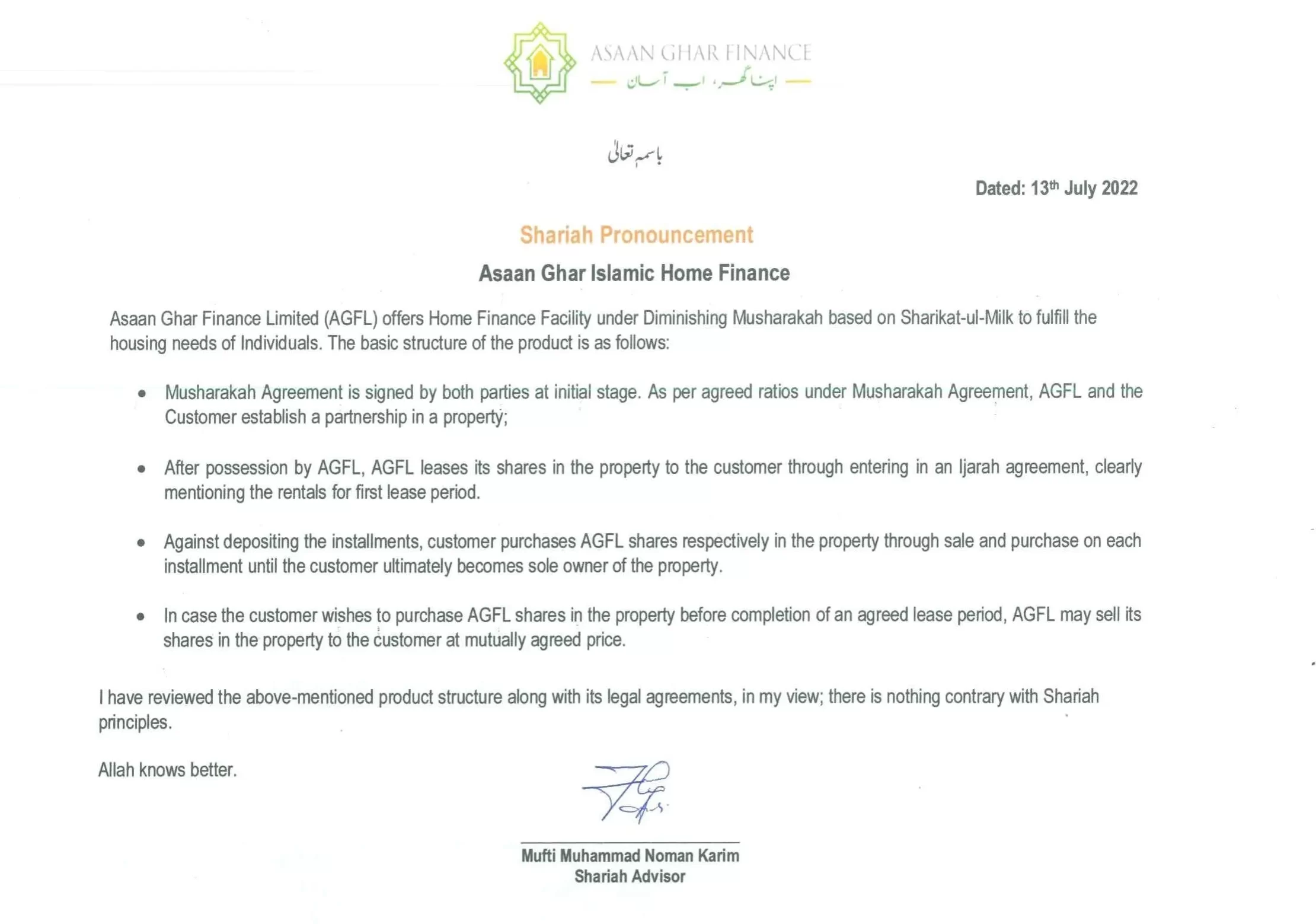
Home Financing Made Easy: Tips and Tricks for Success in Pakistan’s Real Estate Market
Navigating Pakistan’s real estate market can be both exciting and daunting. The market has seen fluctuating trends, with urban areas like Karachi, Lahore, and Islamabad experiencing significant growth in both demand and property values. This growth is driven by an increasing population, urban migration, and an emerging middle class seeking to invest in property. However, the complexity of the market and the financial requirements involved can pose challenges for many aspiring homeowners.
Home financing has become an indispensable tool in this landscape, providing a pathway for many to own property who otherwise might not have the financial means to make such a large investment outright. Whether through conventional bank loans, Islamic financing, or government-backed schemes, these financial products allow potential buyers to spread the cost of purchasing a home over many years, making homeownership accessible and more manageable.
Despite the availability of these financing options, homebuyers in Pakistan face several common challenges. High interest rates, stringent eligibility criteria, and a substantial down payment requirement can be significant hurdles. Additionally, the bureaucratic processes involved can be cumbersome, often characterized by lengthy procedures and a lack of transparency, which can deter first-time buyers and seasoned investors alike.
Understanding these dynamics and preparing to navigate them effectively is crucial for anyone looking to engage with Pakistan’s real estate market. This guide aims to provide practical tips and actionable insights to help prospective homeowners overcome these challenges, streamline the home financing process, and successfully secure their dream home in Pakistan.
Understanding Your Home Financing Options
In Pakistan, aspiring homeowners have several home financing options to choose from, each catering to different financial situations and personal beliefs. Understanding these options, along with their respective advantages and drawbacks, is crucial for making an informed decision that aligns with your homeownership goals.
Overview of Home Financing Options
- Conventional Loans: These are typically offered by banks or private finance companies and involve interest-based repayments. Conventional loans may offer fixed or variable interest rates and various repayment terms.
- Islamic Financing: This type of financing adheres to Islamic laws, avoiding interest (Riba) and instead using Shariah-compliant contracts such as Murabaha (cost-plus financing) or Ijarah (lease-to-own). Islamic banks and dedicated Islamic windows in conventional banks provide these services.
- Government-Backed Schemes: The government of Pakistan occasionally introduces schemes aimed at making homeownership more accessible. These schemes often offer subsidized rates, lower down payments, and support for low-income families.
Pros and Cons of Each Financing Type
Conventional Loans
- Pros: Potentially lower upfront costs and more flexible loan terms.
- Cons: Interest rates can vary with market conditions, which might increase the cost of borrowing over time.
Islamic Financing
- Pros: Compliance with Islamic principles, typically fixed payments that do not change with market fluctuations.
- Cons: May have higher initial setup or administrative costs compared to conventional loans.
Government-Backed Schemes
- Pros: Often feature lower interest rates and down payments, making them accessible to a broader population.
- Cons: May have stringent eligibility criteria and limited availability, often requiring timely application submissions due to high demand.
How to Choose the Right Financing Option
- Assess Your Financial Health: Review your income stability, debt-to-income ratio, and other financial commitments. This assessment will help determine how much you can afford to borrow and repay over time.
- Align with Personal Beliefs: For those who practice Islam, ensuring that financial transactions comply with Shariah laws may be paramount. Islamic financing would be preferable in such cases.
- Consider Long-Term Costs and Benefits: Analyze the total cost of each financing option over the loan’s life. Consider factors like the interest rate environment (for conventional loans) or profit rates (for Islamic financing).
- Seek Professional Advice: Consulting with financial advisors or mortgage brokers can provide personalized insights and recommendations based on your unique financial situation and current market conditions.
Preparing for Home Financing
Before diving into the world of home financing, it’s crucial to ensure you are financially prepared. This preparation not only boosts your chances of securing financing but also positions you to manage your future mortgage payments effectively. Here’s how you can assess your financial readiness and make strategic moves to strengthen your application.
Steps to Assess Your Financial Readiness
- Budgeting: Start with a detailed budget that outlines your income and expenditures. This will help you understand how much you can realistically afford to allocate towards monthly mortgage payments without compromising other financial obligations.
- Credit Score Evaluation: Check your credit score through a reputable credit bureau. A higher credit score not only enhances your chances of getting approved but can also help you secure more favorable loan terms.
- Debt-to-income Ratio: Calculate your debt-to-income ratio, which should ideally be below 40%. This ratio is a key factor that lenders consider to evaluate your ability to manage monthly payments.
- Importance of Saving for a Down Payment
- Why It Matters: The down payment is crucial as it affects your loan-to-value ratio and, consequently, the interest rates and terms of your loan. A substantial down payment can reduce your overall loan amount and the interest paid over time.
- How Much to Save: Generally, you should aim to save at least 15-20% of the property’s purchase price. For more expensive properties or to qualify for better terms, consider saving more.
Tips on Improving Your Credit Score to Get Better Financing Terms
- Pay Bills on Time: Ensure that all your bills, including utilities, credit cards, and other loans, are paid on time. Late payments can significantly hurt your credit score.
- Reduce Debt Levels: Pay down existing debts, especially high-interest credit cards, which can improve your credit score and your debt-to-income ratio.
- Limit New Credit Inquiries: Every time you apply for credit, it can temporarily lower your credit score. Limit new inquiries by only applying for necessary credit.
- Check Your Credit Report for Errors: Regularly review your credit report for any inaccuracies or fraudulent activities. If you find errors, dispute them with the credit bureau to have them corrected.
Navigating the Application Process
Securing home financing in Pakistan involves a multi-step application process that requires careful preparation and attention to detail. Understanding the flow of this process and knowing what documents to prepare can significantly enhance your chances of approval. Here’s a detailed guide on how to navigate the application process effectively.
Detailed Guide on the Application Process for Home Financing
Step 1: Loan Pre-Qualification
Start with a pre-qualification session with your chosen lender, which will give you an estimate of how much you can afford based on your income and financial status.
Step 2: Loan Application
Fill out the loan application form thoroughly. This form will require detailed personal information, financial details, and information about the property you wish to purchase.
Step 3: Documentation Submission
Submit all required documentation along with your application. This typically includes financial statements, proof of income, employment verification, and property details.
Step 4: Application Review
The lender will review your application and documents to verify your financial health and the legality of the property.
Step 5: Property Appraisal
The lender will conduct an appraisal to confirm the market value and condition of the property to ensure it meets their lending criteria.
Step 6: Loan Approval and Offer
If everything is satisfactory, the lender will approve your loan and send you a loan offer, which details the terms of the mortgage.
Step 7: Loan Agreement Signing
Review the loan agreement carefully before signing. Ensure all terms match what was previously discussed or offered.
Step 8: Disbursement
Once the agreement is signed, the loan amount will be disbursed according to the terms agreed upon, typically to the seller of the property.
Required Documents and Information for a Smooth Application
- Personal Identification: CNIC, passport, or any other government-issued ID.
- Proof of Income: Recent salary slips, tax returns, or business financial statements if self-employed.
- Employment Verification: A letter from your employer detailing your employment status and income.
- Bank Statements: Typically, the last six months to a year.
- Property Documents: Ownership documents, NOC from relevant authorities, and any other necessary legal papers.
- Credit Report: Some lenders may require a copy of your credit report.
Common Pitfalls to Avoid During the Application
- Incomplete Applications: Always double-check your application for completeness. Missing information can lead to delays or even rejections.
- Incorrect Information: Ensure all information provided is accurate and truthful. Discrepancies can lead to significant issues during the verification process.
- Ignoring Credit Health: Do not overlook your credit status. A poor credit score or a high level of existing debt can negatively impact your application.
- Lack of Preparation for Down Payment: Ensure you have the required down payment ready as it significantly affects the loan terms and approval.
- Not Understanding the Terms: Failing to understand the terms of the loan can lead to surprises later. If unsure, seek clarification from your lender or a financial advisor.
Negotiating the Best Terms
Securing a home loan is not just about acceptance — it’s also about ensuring the terms are as favorable as possible. Understanding how to effectively compare loan offers and negotiate terms can save you a significant amount of money over the life of the loan. Additionally, the expertise of a mortgage broker can be invaluable in this process. Here’s how to navigate these crucial steps.
How to Understand and Compare Loan Offers
- Interest Rates: Compare the interest rates offered by different lenders. Look beyond the initial rate to see if it is fixed or variable and understand how changes might impact your payments.
- Repayment Terms: Examine the length of the loan and the flexibility in repayment options. A shorter term might mean higher monthly payments but lower overall interest, while a longer term could increase the total interest paid.
- Fees and Charges: Be aware of all fees, including application fees, processing fees, early payment penalties, and any other hidden costs.
- Features and Benefits: Some loans offer features like the ability to make extra payments without penalties, redraw facilities, or offset accounts. Consider how valuable these features are in your situation.
Tips on Negotiating Interest Rates, Repayment Terms, and Other Loan Conditions
- Shop Around: Use the offers from various lenders as leverage. Showing that you have other options can make your current lender more inclined to offer competitive terms.
- Highlight Financial Stability: Demonstrate your creditworthiness and financial stability by presenting a strong financial record. This can position you as a low-risk borrower, which might secure a lower interest rate.
- Negotiate Fees: Many of the fees associated with a mortgage can be negotiated. Don’t hesitate to ask for lower or waived fees.
- Be Informed: Understanding the typical terms and conditions for home loans in your area will equip you with the knowledge to negotiate effectively.
The Role of a Mortgage Broker and Whether You Should Consider One
- What They Do: Mortgage brokers act as intermediaries between borrowers and lenders. They have access to a range of products and can help find the best match based on your financial situation.
- Pros of Using a Broker: Brokers can save you time by handling the negotiation and application process. They often know deals not directly available to the public and can offer tailored advice based on extensive market knowledge.
- Cons of Using a Broker: Brokers may charge fees for their services, which can sometimes be substantial. Additionally, some brokers might be incentivized to recommend products that offer them higher commissions, rather than the best option for you.
- Consideration: If you’re unsure about navigating the loan market or negotiating terms on your own, or if you have a complex financial situation, considering a mortgage broker might be beneficial. Ensure that you choose a reputable broker, ideally one recommended by trusted sources or with strong reviews.
Overcoming Common Challenges
Navigating the path to securing home financing in Pakistan can be fraught with challenges, from navigating high interest rates and stringent eligibility criteria to dealing with bureaucratic red tape and slow processing times. Here’s how to identify and overcome these common obstacles to streamline your journey toward homeownership.
High-Interest Rates and Strict Eligibility Criteria
- Research and Compare: Start by extensively researching and comparing various loan options. Understanding the market will help you find competitive rates and terms that best fit your financial situation.
- Improve Financial Health: Strengthen your loan application by improving your financial health. This includes boosting your credit score, reducing debts, and increasing your savings. A strong financial standing can help you meet strict eligibility criteria and may also help you secure lower interest rates.
- Consider Government Schemes: Look into government-backed home financing schemes, which often offer more favorable terms, including lower interest rates and relaxed eligibility requirements for first-time buyers or lower-income families.
- Bureaucratic Hurdles and Slow Processing Times
- Prepare Documentation in Advance: Gather and organize all necessary documentation before starting the application process. This includes financial records, employment verification, property documents, and personal identification.
- Follow Up Proactively: Stay proactive in your communications with lenders. Regular follow-ups can help keep your application moving and draw attention to any delays or issues that need resolution.
- Seek Professional Help: Consider hiring a professional, such as a lawyer or a mortgage broker, who can help navigate the complex bureaucratic processes. They can offer valuable advice and take over some of the more tedious aspects of the application process.
- Advice for First-Time Homebuyers and Those with Irregular Incomes
First-Time Homebuyers
- Educate Yourself: Take the time to educate yourself about the home buying and financing process. Attend seminars, read up on local real estate laws, and understand the responsibilities that come with homeownership.
- Budget for Additional Costs: Remember to budget for additional costs, such as closing fees, taxes, maintenance, and unexpected repairs, which can be significant.
Buyers with Irregular Incomes
- Show Proof of Income Stability: Even with irregular incomes, you can show stability through tax returns, bank statements, and past contracts. This documentation can provide lenders with the assurance they need about your ability to repay the loan.
- Opt for a Lower Loan Amount: If possible, aim for a more modest property that requires a smaller loan amount. This can make financing easier to secure and manage on an irregular income.
- Save a Larger Down Payment: A larger down payment not only reduces the loan amount but also demonstrates your financial commitment to lenders, potentially making them more willing to accommodate your irregular income situation.
Post-Financing Considerations
Securing home financing is a significant accomplishment, but it’s just the beginning of a long-term financial commitment. Effective management of your mortgage, understanding when and how to consider refinancing, and employing strategies for repayment are crucial for maintaining financial health and eventually achieving full homeownership. Here are some insights and tips for managing your mortgage post-financing.
Managing Your Mortgage Effectively After Securing Financing
- Stay Organized: Keep all your mortgage-related documents organized and easily accessible. This includes your loan agreement, repayment schedules, and any correspondence with your lender.
- Monitor Your Budget: Regularly review and adjust your budget to ensure you can comfortably make your mortgage payments without compromising other financial obligations.
- Set Up Automatic Payments: Consider setting up automatic payments for your mortgage to avoid late payments. Late payments can affect your credit score and may incur penalties.
- How to Handle Refinancing If the Need Arises
- Assess the Benefits: Refinancing can offer benefits like lower interest rates, reduced monthly payments, or a shorter loan term. Assess the financial benefits against the costs involved, such as fees and potential penalties.
- Timing: The best time to refinance is when interest rates drop significantly below your current mortgage rate or when your financial situation has improved enough to qualify for better terms.
- Consult Professionals: Speak with financial advisors or mortgage brokers who can provide insights and guidance on the refinancing process.
Long-term Strategies for Mortgage Repayment
Extra Payments: If possible, make extra payments towards your principal balance. This can significantly reduce the amount of interest you pay over the life of the loan and can shorten the loan term.
Review Your Mortgage Terms Annually: As your financial situation changes, review your mortgage terms annually to see if adjustments need to be made, such as increasing your repayment amount.
Prepare for Rate Changes: If you have a variable rate mortgage, prepare for potential rate increases by saving extra funds that can cover higher payments.
Conclusion
Throughout this guide, we’ve covered essential aspects of navigating home financing in Pakistan—from understanding different financing options and preparing your application to negotiating favorable terms and managing your mortgage post-financing.
Now that you’re equipped with the necessary information, take the next step towards securing your dream home with Asaan Ghar Finance Ltd. Reach out to their team of dedicated professionals who can provide you with personalized advice and tailor financing options that best suit your needs. Asaan Ghar is committed to helping you navigate the complexities of home financing with ease and confidence. Start your journey to homeownership today with Asaan Ghar Finance Ltd.









Leave A Comment